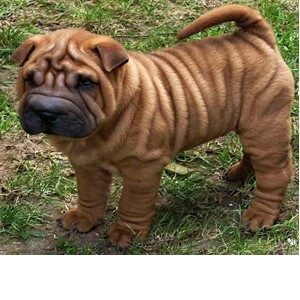Best Chinese Shur Pei Dog Bed
Your Chinese Shar-Pei Needs a Good Bed!
Introduction
Best Chinese Shur Pei dog bed takes into account their medical condition and preferences. An orthopedic memory foam bed is a good choice for health reasons.
Chinese Shar Pei is a unique and ancient breed known for its deep wrinkles, distinctive “hippopotamus” face, and loyal personality.
Originally bred in China for guarding, hunting, and even dog fighting, the Shar Pei has evolved into a devoted companion and watchdog. Their protective nature, combined with a strong-willed and independent mindset, makes them a fascinating yet challenging breed for new owners.
Shar Peis are intelligent but stubborn, requiring consistent training and early socialization to ensure they develop into well-mannered family pets. They are known for being reserved with strangers but deeply affectionate toward their families. While they may not be as outwardly friendly as some breeds, their loyalty is unmatched.
One of the most distinctive features of the Shar Pei is its wrinkled skin, which, while adorable, requires regular care to prevent infections. They are also prone to breed-specific health conditions, such as Shar Pei Fever, entropion, and skin allergies, making routine vet visits essential.
Owning a Shar Pei requires commitment, patience, and a thorough understanding of their needs. From proper nutrition to training techniques and grooming routines, Shar Pei owners must be well-prepared to provide the best care possible.
Whether you’re a new owner or simply fascinated by the breed, this information will help you better understand and appreciate the Chinese Shar Pei.
In this guide, we’ll explore everything you need to know about this remarkable breed, from their history and temperament to essential health tips and cost considerations.
Video: Chinese Shar Pei Pros & Cons
This is an excellent video for first time owners of this dog breed. It will help you to determine if this breed dog is the right choice for you.
Best Dog Bed Types
For a Chinese Shar-Pei, you’ll want a dog bed that supports their joints, helps with temperature regulation, and accommodates their unique build. Here are some of the best types of dog beds for a Shar-Pei:
- Orthopedic Memory Foam Bed
- Ideal for joint support, especially since Shar-Peis are prone to hip dysplasia and arthritis.
- Provides extra cushioning for their muscular yet compact bodies.
- Look for the CertiPUR-US Seal. It means the materials used do not contain any toxins or chemicals that are harmful to pets and humans.
- Bolster or Donut Bed
- Offers head and neck support, which Shar-Peis enjoy.
- Provides a sense of security and reduces anxiety.
- Elevated Cooling Bed
- Helps with air circulation, which is great for a breed that can overheat easily.
- Keeps them cool in warmer climates and reduces pressure on joints.
- Waterproof & Easy-to-Clean Beds
- Since Shar-Peis have skin folds prone to infections, a bed with a removable, washable cover is essential.
- Waterproof beds help protect against drool or accidental messes.
- Faux Fur or Plush Beds
- Soft and cozy for comfort, especially if your Shar-Pei loves burrowing.
- Helps with warmth in colder months since they can be sensitive to extreme temperatures.
Best Dog Bed Brands
Here are some top-rated dog bed recommendations for a Chinese Shar-Pei:
- Best Orthopedic Bed:
Big Barker Orthopedic Dog Bed
- High-density memory foam for joint support.
- Designed for medium to large breeds like Shar-Peis.
- Machine-washable, durable microfiber cover.
FurHaven Plush Orthopedic Sofa Dog Bed
- Comes with bolstered edges for neck support.
- Orthopedic foam to relieve pressure on joints.
- Available in various sizes and washable covers.
- Best Bolster or Donut Bed:
Best Friends by Sheri Calming Donut Bed
- Soft, plush faux fur for warmth.
- Raised edges provide a secure, cozy feel.
- Great for Shar-Peis who like to curl up and nest.
Frisco Plush Orthopedic Bolster Dog Bed
- Memory foam base with bolstered sides.
- Washable cover for easy cleaning.
- Non-slip bottom to prevent movement.
- Best Elevated Cooling Bed:
K&H Pet Products Original Elevated Dog Bed
- Breathable mesh fabric keeps Shar-Peis cool.
- Great for outdoor or warm-weather use.
- Sturdy, easy to clean, and chew resistant.
Coolaroo Elevated Pet Bed
- Off-the-ground design allows for airflow.
- Lightweight and portable for both indoor/outdoor use.
- Durable steel frame for long-lasting support.
- Best Waterproof & Easy-to-Clean Bed:
Brindle Waterproof Memory Foam Pet Bed
- Waterproof inner liner protects the foam.
- Orthopedic shredded memory foam for support.
- Machine-washable zippered cover.
Tip: The Dog’s Bed Orthopedic Memory Foam Bed
- Waterproof and odor resistant.
- Helps with joint pain and arthritis.
- Non-slip base to keep the bed in place.
Facts and Fun Facts
Here are some facts about the Chinese Shar Pei: Measurements:
- Size: Medium-Sized
- Group: Non-Supporting Group
- Height Male: 18 – 20 inches
- Height Female: 17 – 19 inches
- Weight Male: 50 – 60 lbs.
- Weight Female: 40 – 55 lbs.
- Length Male: 22 – 26 inches
- Length Female: 20 – 24 inches
- Life Span: 8 – 12 years
- Full-Grown: 12 to 18 months
- Colors: Apricot Dilute, Brown, Fawn, Fawn Sable, Red, Red Fawn, Cream, Cream Dilute, Cream Sable, Black, Black Sable, Blue, Blue Dilute, Chocolate Dilute, Lilac Dilute, and Isabella Dilute
- Popularity: This breed is ranked the 70th most popular in the United States by the American Kennel Club for 2023.
- Intelligence: This breed is ranked the 51st most intelligent by Stanley Coren.
Facts
- Ancient Breed – The Shar Pei dates back over 2,000 years to ancient China, where they were used as guard dogs, hunters, and farm dogs.
- Unique Wrinkles – Their loose, wrinkled skin was originally thought to help them escape the grip of predators or opponents in fights.
- Blue-Black Tongue – Like the Chow Chow, the Shar Pei has a distinctive blue-black tongue, a rare trait among dog breeds.
- Independent Personality – They are known for being independent, sometimes aloof, but very loyal to their families.
- Guard Dog Instincts – Historically bred as guard dogs, they are naturally protective and can be wary of strangers.
- Minimal Grooming Needs – Despite their wrinkles, Shar Peis have a short, rough coat that requires little grooming. However, their skin folds must be kept clean to prevent infections.
- Three Coat Types – The breed has three coat varieties: horse coat (short and rough), brush coat (slightly longer), and rare bear coat (long and soft).
- Distinctive “Hippo” Face – Their broad, flat muzzle gives them a unique appearance, often described as “hippopotamus-like.”
- Quiet Dogs – Shar Peis are not known for excessive barking. They usually bark only when necessary, making them good watchdogs.
- Prone to Health Issues – Due to their unique wrinkles and genetics, they can suffer from conditions like Shar Pei Fever, entropion (eyelid issues), and skin infections.
- Once a Rare Breed – In the 1970s, the Shar Pei was one of the rarest dog breeds in the world. Efforts to revive the breed led to their popularity in the U.S. and Europe.
- Strong-Willed but Trainable – They require firm, consistent training with positive reinforcement, as they can be stubborn and independent-minded.
Fun Facts
Here are some fun facts about the Chinese Shar Pei:
- They Look Like Puppies Forever – Thanks to their signature wrinkles, adult Shar Peis still have that adorable “puppy-like” appearance well into adulthood.
- Their Name Means “Sand Skin” – The name “Shar Pei” translates to “sand skin” in Chinese, referring to their short, bristly coat.
- They Were Once Endangered – In the 1970s, there were only a few hundred Shar Peis left in the world! They were even listed in the Guinness Book of World Records as one of the rarest dog breeds.
- They Have a Secret Weapon – Their thick, wrinkled skin and loose-fitting coat made it harder for other dogs to get a firm grip in fights, helping them wiggle free.
- Their Muzzle Looks Like a Hippo – Many people say their large, square muzzle makes them resemble a little hippopotamus!
- They Can Have Purple Tongues – While their tongues are typically blue-black, some Shar Peis have a purplish tint, a trait they share with the Chow Chow.
- They Were Once Peasant Dogs – Before becoming a rare and prized breed, Shar Peis were all-purpose farm dogs in China, used for hunting, guarding, and herding livestock.
- Wrinkles Fade Over Time – Puppies are born extra wrinkly, but as they grow, many of the deep folds smooth out a bit.
- They Love to Lounge – Despite their tough history as working dogs, modern Shar Peis enjoy a good nap and can be quite the couch potatoes!
- They Have a Unique Gait – Their movement is slightly different from other dogs, often described as a “rolling” or “stiff” walk due to their body structure.
- They’re Not Big Droolers – Unlike many wrinkly breeds, Shar Peis don’t drool much, making them a cleaner option for those who prefer less slobber.
- They’re Surprisingly Cat-Like – Shar Peis are known for their independent and clean nature, sometimes even grooming themselves like cats!
Health Conditions
Here are some of the most common health conditions that affect the Chinese Shar Pei:
- Shar Pei Fever (FSF – Familial Shar Pei Fever) – A breed-specific condition that causes periodic fevers, swelling in the hocks, and potential kidney failure if untreated.
- Amyloidosis – Often linked to Shar Pei Fever, this condition occurs when abnormal proteins build up in organs (especially the kidneys or liver), leading to organ failure.
- Entropion – A common eye condition where the eyelids roll inward, causing irritation, pain, and potential damage to the cornea. It often requires surgical correction.
- Skin Infections (Pyoderma) – Their deep skin folds can trap moisture and bacteria, leading to infections if not properly cleaned and dried.
- Demodectic Mange – The skin condition is caused by microscopic mites, which Shar Peis can be genetically predisposed to. It leads to hair loss and itchy, irritated skin.
- Hypothyroidism – A hormonal disorder where the thyroid gland doesn’t produce enough hormones, leading to weight gain, lethargy, and skin issues.
- Hip Dysplasia – They have a genetic condition affecting the hip joints, leading to arthritis and mobility issues as the dog ages.
- Elbow Dysplasia – Similar to hip dysplasia but affecting the elbows, causing lameness and discomfort.
- Gastric Dilatation-Volvulus (Bloat) – Like many deep-chested breeds, Shar Peis are at risk for bloat, a life-threatening condition where the stomach twists and traps gas.
- Allergies – Shar Peis are prone to food and environmental allergies, which can lead to itching, skin infections, and ear infections.
- Cherry Eye – A condition where the gland in the dog’s third eyelid prolapses, appearing as a red mass in the corner of the eye. It may require surgery to fix.
- Otitis Externa (Ear Infections) – Their small, tight ear canals are prone to wax buildup and infections, making regular ear cleaning essential.
Tip: Regular vet check-ups and proactive care can help manage these conditions.
Behavior Issues
Here’s a list of Chinese Shar Pei behaviors that new owners should be aware of:
- Strong-Willed and Independent – Shar Peis are not overly eager to please, so training requires patience and consistency. They do best with firm but positive reinforcement.
- Loyal but Aloof – While they form strong bonds with their families, they tend to be reserved around strangers and may take time to warm up to new people.
- Natural Guard Dog Instincts – Originally bred as guard dogs, they are naturally protective and may be wary or territorial, making early socialization essential.
- Can Be Stubborn – Their independent nature means they may ignore commands if they don’t see the point in following them. Consistency is key!
- Low Energy Indoors, Moderate Outdoors – They enjoy lounging around the house but still need regular walks and mental stimulation to prevent boredom.
- Not Always Dog-Friendly – Some Shar Peis can be dominant or aggressive toward other dogs, especially if not properly socialized from a young age.
- Quiet but Alert – Unlike some other guard breeds, Shar Peis don’t bark excessively. However, they will alert their owners to anything unusual.
- Sensitive to Training Methods – Harsh training methods can cause them to shut down or become resistant. Positive reinforcement works best!
- Prone to Separation Anxiety – While independent, some Shar Peis get very attached to their owners and may become anxious when left alone for long periods.
- Fast Learners (When They Want To Be) – They can pick up commands quickly but may choose when they want to listen. Training should be engaging and rewarding.
- Challenging to Housebreak – Some Shar Peis take longer to potty train than other breeds, so patience and consistency are important.
- Cat-Like Cleanliness – Many Shar Peis groom themselves like cats and dislike getting dirty, which makes them relatively low-maintenance when it comes to hygiene.
Bonus Tip: Early socialization and structured training are crucial for a well-behaved Shar Pei! They thrive with an owner who is confident, consistent, and patient.
Tips for New Owners
Here’s a list of tips for new Chinese Shar Pei owners:
1. Start Socialization Early
Expose your Shar Pei to different people, pets, and environments from a young age. Their natural aloofness and guarding instincts can lead to aggression if they aren’t properly socialized.
2. Be a Firm, Consistent Leader
Shar Peis are independent and strong-willed, so they need an owner who sets clear rules and boundaries. Use positive reinforcement rather than harsh corrections.
3. Prioritize Skin Care
Their wrinkles can trap moisture and bacteria, leading to infections. Regularly check and clean between the folds with a damp cloth and dry thoroughly afterward.
4. Watch for Eye Problems
Shar Peis are prone to entropion, where the eyelids roll inward. If you notice excessive blinking, redness, or discomfort, consult a vet. Surgery may be necessary in severe cases.
5. Monitor for Shar Pei Fever
This breed can suffer from Familial Shar Pei Fever (FSF), causing swollen joints and high fevers. If your Shar Pei has recurring fevers, seek veterinary advice.
6. Keep Their Ears Clean
Shar Peis have small, tight ear canals that trap moisture and wax, making them prone to infections. Clean their ears weekly with a vet-approved cleaner.
7. Provide Moderate but Regular Exercise
They don’t need excessive exercise, but daily walks and playtime will help keep them fit and prevent boredom. Avoid overexertion, especially in hot weather.
8. Feed a High-Quality Diet
Shar Peis are prone to food allergies and skin sensitivities. A diet rich in lean proteins and limited fillers (like corn and wheat) can help prevent issues.
9. Avoid Harsh Training Methods
Shar Peis are sensitive and independent. Patience, consistency, and positive reinforcement (treats, praise) work best. Harsh training can cause them to shut down.
10. Be Mindful of Heat Sensitivity
Their short snouts make them prone to overheating. Avoid excessive exercise in hot weather and always provide access to shade and fresh water.
11. Supervise Interactions with Other Dogs
Some Shar Peis can be dominant or reactive, especially toward unfamiliar dogs. Early socialization and controlled introductions can help.
12. Be Prepared for Vet Expenses
Due to breed-specific health concerns (skin infections, eye issues, hip dysplasia, etc.), regular vet check-ups and pet insurance are good investments.
Bonus Tip:
Shar Peis thrive on routine and can be stubborn about change. Keeping a consistent feeding, training, and exercise schedule will help them feel secure and well-behaved.
Costs of Ownership
Here’s a breakdown of the average costs of owning a Chinese Shar Pei:
-
Initial Purchase Price or Adoption Fee
- Reputable Breeder: $1,000 – $2,500 (depending on pedigree, coat type, and breeder reputation)
- Rescue or Adoption: $200 – $500
-
First-Year Costs (Including One-Time Expenses)
- Spay/Neuter (if not already done): $200 – $500
- Initial Vaccinations & Vet Visits: $150 – $300
- Microchipping: $50 – $75
- Crate & Bedding: $100 – $200
- Leashes, Collar, and Harness: $30 – $80
- Food & Water Bowls: $20 – $50
- Toys & Enrichment Items: $50 – $150
- Grooming Supplies (brush, shampoo, wrinkle wipes, ear cleaner): $50 – $100
- Estimated First-Year Total (Including Purchase Price): $2,000 – $4,500+
-
Ongoing Annual Costs
- Food (High-Quality Kibble or Raw Diet): $600 – $1,200 per year
- Routine Vet Visits & Vaccines: $200 – $500 per year
- Flea, Tick & Heartworm Prevention: $150 – $300 per year
- Grooming (DIY or Professional): $100 – $300 per year
- Pet Insurance (Optional but Recommended): $400 – $800 per year
- Toys, Treats & Miscellaneous Supplies: $200 – $400 per year
- Estimated Annual Cost: $1,500 – $3,500+
-
Potential Additional Costs
- Emergency Vet Bills: $500 – $5,000+ (depending on the issue)
- Allergy Medications or Specialized Diets: $300 – $1,000 per year
- Training Classes or Private Trainers: $150 – $800+
- Dog Walker or Pet Sitting: $15 – $40 per visit
5. Lifetime Cost Estimate (10–12 years)
- $15,000 – $40,000+ over their lifespan, depending on health, emergencies, and care level.
Safe Foods and Foods To Avoid
These foods provide essential nutrients and are generally safe in moderation:
Proteins (Cooked & Unseasoned)
- Chicken
- Turkey
- Beef
- Salmon (cooked, boneless)
- Whitefish
- Eggs
Fruits (In Moderation)
- Apples (no seeds)
- Blueberries
- Bananas
- Strawberries
- Watermelon (seedless)
- Pumpkin (cooked, plain – great for digestion)
Vegetables
- Carrots
- Green beans
- Sweet potatoes
- Broccoli (small amounts)
- Peas
- Zucchini
Dairy (In Small Amounts, If Tolerated)
- Plain yogurt (probiotic benefits)
- Cottage cheese
- Cheese (low-fat options)
Grains (If No Allergies)
- Brown rice
- Oatmeal
- Quinoa
Foods to Avoid
Shar Peis are prone to food allergies and sensitive digestion, so be careful with these foods:
-
Toxic Foods (NEVER Feed!)
- Chocolate (contains theobromine, toxic to dogs)
- Grapes & Raisins (can cause kidney failure)
- Onions, Garlic, & Chives (toxic to red blood cells)
- Macadamia Nuts (toxic and can cause tremors)
- Xylitol (Artificial Sweetener) (found in sugar-free gum, deadly to dogs)
- Alcohol (even small amounts can be fatal)
- Caffeine (Coffee, Tea, Energy Drinks) (causes heart issues)
2. Foods That Cause Digestive Issues
- Dairy in Large Amounts (many Shar Peis are lactose intolerant)
- Fatty & Fried Foods (can cause pancreatitis)
- Spicy Foods (irritates their digestive system)
- Corn & Wheat (common allergens in Shar Peis)
- Soy-Based Products (can trigger allergies)
- Excessive Salt & Processed Foods (harmful over time)
3. Bones & Dangerous Chews
- Cooked Bones (can splinter and cause internal injuries)
- Rawhide (hard to digest and can cause blockages)
Bonus Tip:
Since Shar Peis are prone to allergies, introducing new foods slowly is essential. If you notice itching, ear infections, or digestive issues, consult a vet to rule out food sensitivities.
Conclusion
The Chinese Shar Pei is a truly one-of-a-kind breed, blending history, loyalty, and a distinct personality into a compact yet powerful companion. While their wrinkled appearance and protective instincts make them stand out, owning a Shar Pei is about much more than their looks.
This breed thrives in a home where they receive consistent training, socialization, and structured care. For new owners, understanding a Shar Pei’s independent nature is crucial.
Unlike eager-to-please breeds, Shar Peis require firm but gentle leadership, using positive reinforcement rather than harsh corrections. They are incredibly intelligent but may choose when to listen, so patience and consistency are key. Health care is another important aspect of Shar Pei ownership.
Their skin folds require regular cleaning, and they are prone to eye, ear, and joint issues. Being proactive about their health—through routine vet checkups, high-quality nutrition, and preventive care—can significantly improve their quality of life.
Additionally, their tendency toward food allergies means owners must be mindful of their diet, opting for high-protein, grain-free, or limited-ingredient formulas to prevent digestive issues and skin irritations.
Despite their strong-willed temperament, Shar Peis form deep bonds with their families. They may not be overly affectionate with strangers, but their loyalty to their loved ones is unwavering.
Whether acting as a watchdog or a calm companion, a well-trained and well-socialized Shar Pei can be a fantastic addition to the right household. Before bringing a Shar Pei into your life, it’s essential to evaluate whether their needs, temperament, and potential health concerns align with your lifestyle.
They may not be the ideal breed for first-time dog owners, but with the right knowledge and commitment, a Shar Pei can be a loyal, protective, and loving family member for many years.
By understanding their behavior, health risks, and care requirements, owners can ensure their Shar Pei lives a happy, healthy, and fulfilling life.
If you’re willing to invest time, patience, and love, the reward of owning a Chinese Shar Pei is an unbreakable bond with one of the world’s most distinctive and fascinating dog breeds.
Shop Dog Beds
Shop dog beds for your dog by selecting or clicking on any bed of choice. You will be taken to Amazon where you can read customer reviews and answered questions and place the order.
As an Amazon Associate, I earn from qualifying purchases. Your purchase price is the same as if you shop directly on Amazon.
The price at time of publish is included below to give you an idea of what the price is; however, it is subject to change.
Shop Dog Beds
Shop dog beds for your dog by selecting or clicking on any bed of choice. You will be taken to Amazon where you can read customer reviews and answered questions and place the order. As an Amazon Associate, I earn from qualifying purchases. Your purchase price is the same as if you shop directly on Amazon. The price at time of publish is included below to give you an idea of what the price is; however, it is subject to change.
Cooling Gel Dog Beds
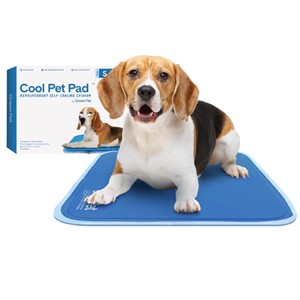
The Green Pet Shop Cooling Mat
Price At Time of Publish $40.00

MH MYLUNE HOME Self Cooling Mat
Price At Time of Publish $40.00
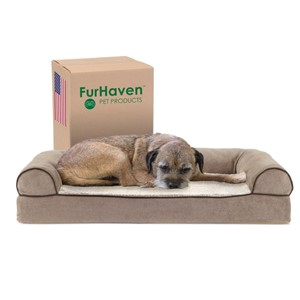
Furhaven Pet Products Cooling Gel Bolsters Small Bed
Price At Time of Publish $45.00

Furhaven Cooling Gel Medium Bed
Price At Time of Publish $42.00

ARF Pets Cooling Gel Pad
Price At Time of Publish $35.00
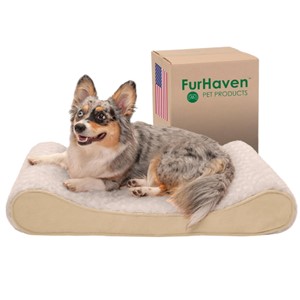
Furhaven Cooling Gel Small Bed
Price At Time of Publish $50.00
Price At Time of Publish $50.00
Orthopedic Dog Beds

PetFusion Orthopedic Dod Bed
Price At Time of Publish $80.00
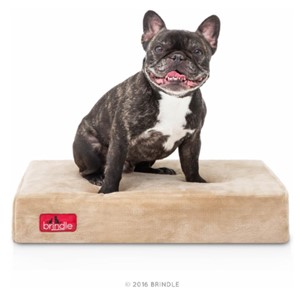
Brindle Orthopedic Bed Khaki
Price At Time of Publish $30.00
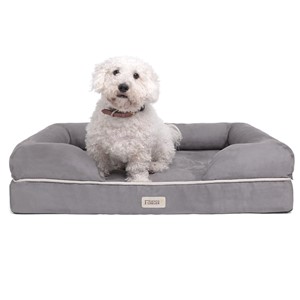
Friends Forever Orthopedic Bolster Bed
Price At Time of Publish $53.00

K9 Ballistics Tough Orthopedic Small Crate Bed
Price At Time of Publish $89.00

MidWest Homes Small Bolster Dog Bed
Price At Time of Publish $10.00

JOYELF Orthopedic Small Sofa Bed
Price At Time of Publish $40.00
Bolster Dog Beds

Furhaven Small-Medium Bolster Dog Bed
Price At Time of Publish $57.00
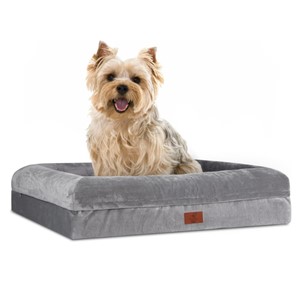
Yiruka Small Bolster Sofa Dog Bed
Price At Time of Publish $40.00

K&H Pet Products Bolster Crate Pad
Price At Time of Publish $22.00
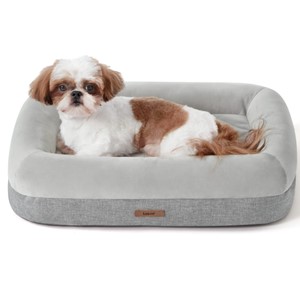
Leasure Small Bolster Dog Bed
Price At Time of Publish $40.00
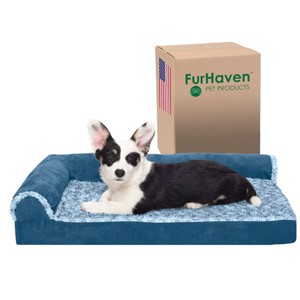
Furhaven Small-Medium L-Shaped Bed
Price At Time of Publish $39.00

Long Rich Bolster Small Bed
Price At Time of Publish $27.00
Elevated Dog Beds
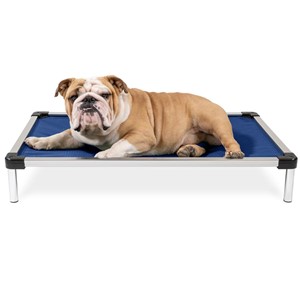
K9 Ballistics Chew Proof Elevated Small Bed
Price At Time of Publish $129.00
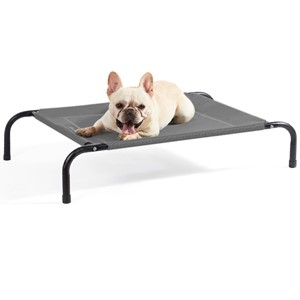
Bedsure Medium Elevated Dog Bed
Price At Time of Publish $33.00
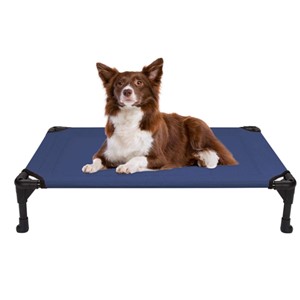
Veehoo Medium Elevated Dog Bed
Price At Time of Publish $45.00
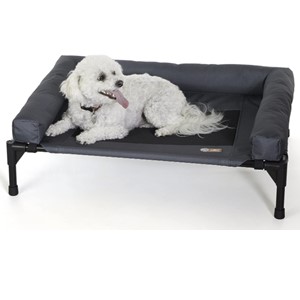
K&H Pet Products Elevated Bolster Dog Bed
Price At Time of Publish $57.00

Kuranda Elevated Chew Proof Small Dog Bed
Price At Time of Publish $134.00
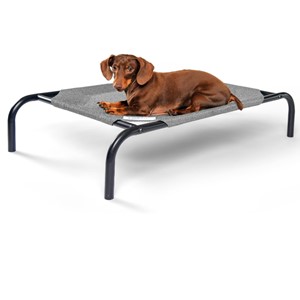
Coolaroo Small Elevated Dog Bed
Price At Time of Publish $21.00
Shop Cave/Donut Dog Beds

Snoozer Cozy Cave Bed
Price At Time of Publish $87.00
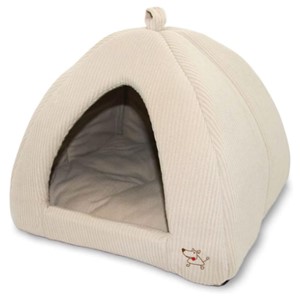
Best Pet Supplies Tent Bed
Price At Time of Publish $23.00
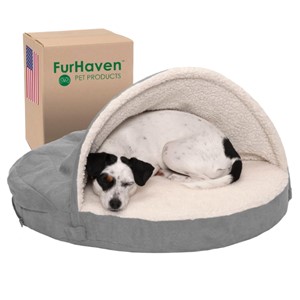
Furhaven Round Orthopedic Cave Bed
Price At Time of Publish $30.00

Best Friends by Sheri Original Calming Donut Bed
Price At Time of Publish $25.00
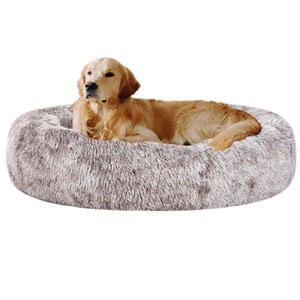
Coohom Oval Calming Donut Cuddler Bed
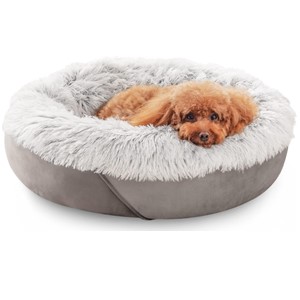
JOEJOY Calming Donut Small Dog Bed
Price At Time of Publish $33.00
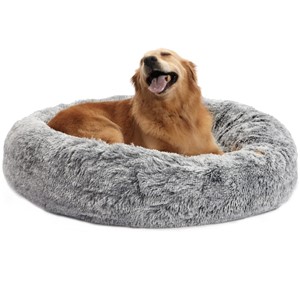
Bedfolks Calming Donut Dog Bed
Price At Time of Publish $66.00

Bedsure Medium Donut Dog Bed
Price At Time of Publish $36.00

Bedsure Medium Donut Dog Bed
Price At Time of Publish $40.00
Related Articles
Below are some other articles you may be interested in reading. Just select on the topic of interest to learn more about it.
-
- Best Healthy Dog Food Brands
- Christmas Presents for My Dog
- Crates for Dogs
- Critical Signs Your Dog Needs Help
- Dog Training Techniques
- How To Train a Puppy
- Positive Reinforcement for Dog Training
- Puppy Proofing Your House
- Training Dog with Treats
- Using Alexa for Dog Behaviors
